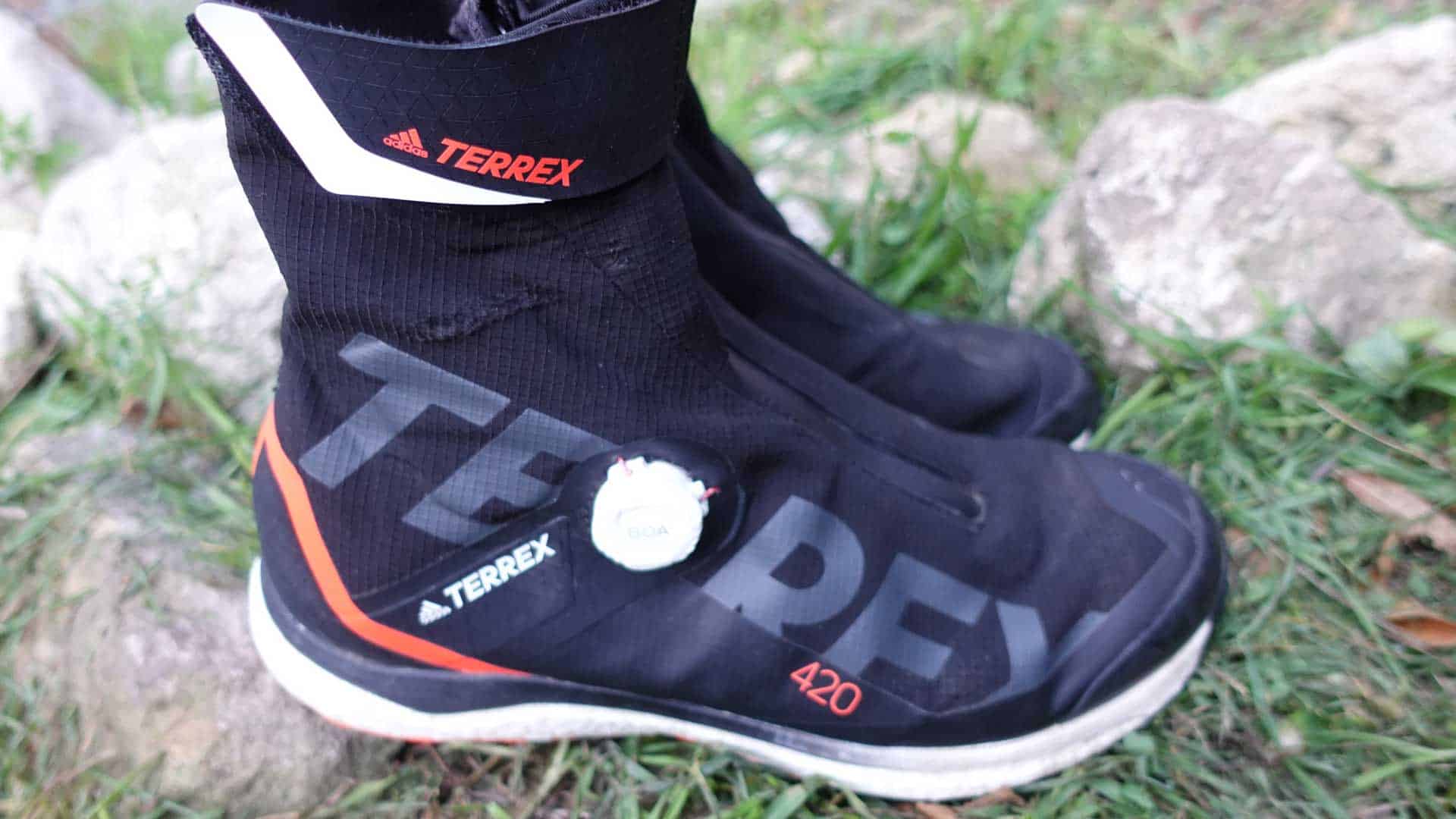The Adidas Terrex Agravic Tech Pro can easily lead astray, given how much they look like winter boots – but they are capable and deliver a lot of performance in a much wider range of conditions.
Years ago, I had bought some Adidas (Terrex, if that even existed) winter boots I took for runs in the snow through many winters.
It was long before there was a decent range of shoes made for winter trail running. No wonder, then, that a visit to the Adidas booth at the ISPO Munich 2020 (while COVID was only just starting to spread) had me notice the Agravic Tech Pro.
The Adidas Terrex Agravic Tech Pro are a curious piece of shoe tech: They look like boots, but are much more of a shoe; they are heavy compared to many trail running shoes, but they run very comfortably.
The Look
I freely admit, part of my reasons for liking these shoes is the way they draw attention.
They really shouldn’t, they are built so simply and solidly. There just is something about their construction, as if they were made from one piece, that makes them stand out and be noticeable.

This Is Not a Boot
The solid construction also makes for an easy misunderstanding: The way that their upper material covers the shoes and seamlessly forms the gaiter makes the Tech Pro look a lot like boots.
Really, though, this upper and gaiter goes over what is much more of a – if still solid – trail running shoe.
The Tech Pro protects well enough, but it is not the high-top shoe (let alone boot) it looks like on first sight.

Fast and Protective Construction
The construction is fantastic for the purpose of fast running (or slogging through snow, whatever conditions demand).
The inner shoe is comfortable; the tongue is padded a little and forms a part of a sock-like liner that hugs the foot nicely.


The back of the inner shoe even has a pull-tab that is nice for taking the shoes on or off (and has never come in the way when in them).
First, then, there is a zipper that goes from the top of the foot to the side of the ankle and closes the gaiter over the inner shoe.
A velcro fastening at the top of the gaiter closes it completely against snow or debris.
Boa Lacing
With a wrap-around construction like that, lacing is often an issue, but Adidas has solved this problem in a way that also really attracted me:
For getting the (inner) shoe to the right fit, there is a Boa lacing system with its dial on the outside.

Located on the outer side, at the top of the inner shoe, the Boa dials are in the perfect place to reach them easily, never have them catch on anything, turn them even with gloves on – and I love that the dials turn in opposite directions from each other, so that you twist your hands and the dials the same way, the same kind of rotation, making it feel absolutely natural.
To tighten, just twist a bit more; lift up the dial, and the laces easily loosen; push down and they remain or can be tightened further again.
One of the dials seems to start being affected by all the pressure I have put on it over 100s of kilometers of running, but with a little sweet talking (okay, a little bit of a pull on the lace with the shoes opened), it still opens. It loosens and tightens as it should if I need to make adjustments during running, anyways.

Water Resistance and Wide-Ranging Usability
The upper/gaiter is only water-resistant, not waterproof, but even this may have been a good decision.
It was still the Agravic Tech Pro I took for the Ötztal Glacier Trailrun, having seen that snowfield and creek crossings were to be expected.
The worst I have noticed with these shoes, running or fast hiking through snow, has been that they got damp – which they would anyways, just from my sweating – but they never got wet.
There was some “I think they feel a bit cooler now,” but that was all there was to it.
Hence, their use at the outing at the Ötztal trail race in the middle of summer. I did not feel sweaty in the Tech Pro, but I was able to enjoy splashing through the creeks without a worry.
Cushioning and Long Run Comfort
Comfort has also been great. As mentioned above, the Agravic Tech Pro are not the lightest; the size that gives them their number marking, i.e. stated weight, has 420 grams. Mine must be a little bit heavier still.


With a decent – but not “max cushioning”-territory – amount of Boost foam, the sole protects and propels very nicely while still giving enough proprioception to feel comfortable jumping from rock to rock.
Experiences
With all the ups and downs, and lots of rocks but also quite some distance on gravel and paved roads, I learned to love that.

I ran in the Tech Pro at the Ötztal Glacier Trail Race, on a personal little ultra-distance attempt that started running up ski pistes and ended on paved bike lanes some 50 km distant, and many local winter runs.
These were also the shoes that helped immensely when the mountain-night hike across the Sarstein turned out to have a rather different surface from what I’d been expecting.
The only thing I am not entirely sure about is the marketing that seems to want the Terrex Agravic Tech Pro to be at home trail running somewhere in the Himalayas in winter snow…
Then again, if I were to move into such an area, into such conditions, I probably would pack these shoes without a second of hesitation.


Leave a Reply